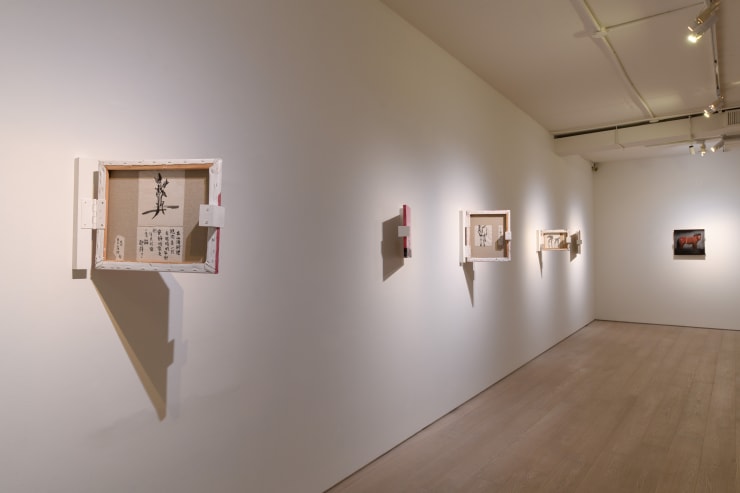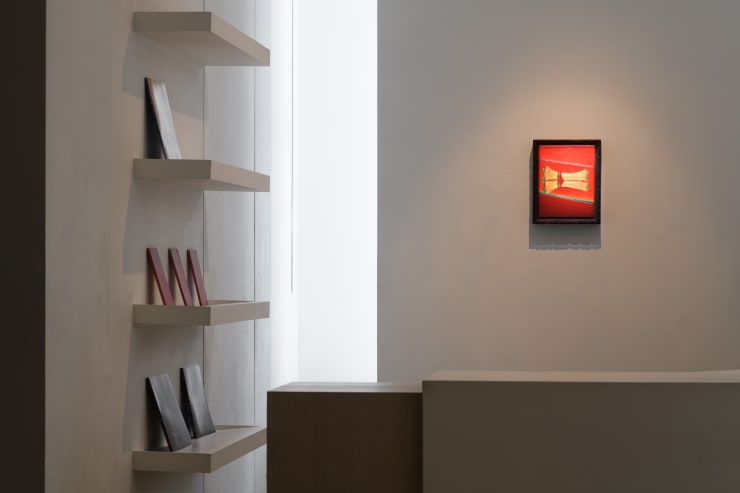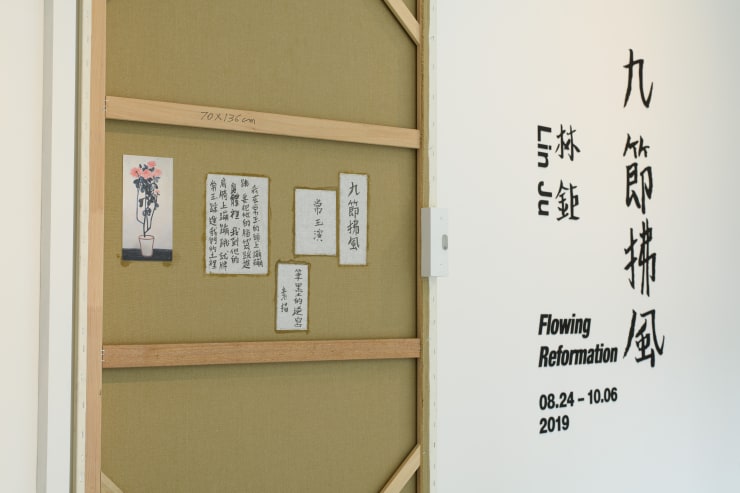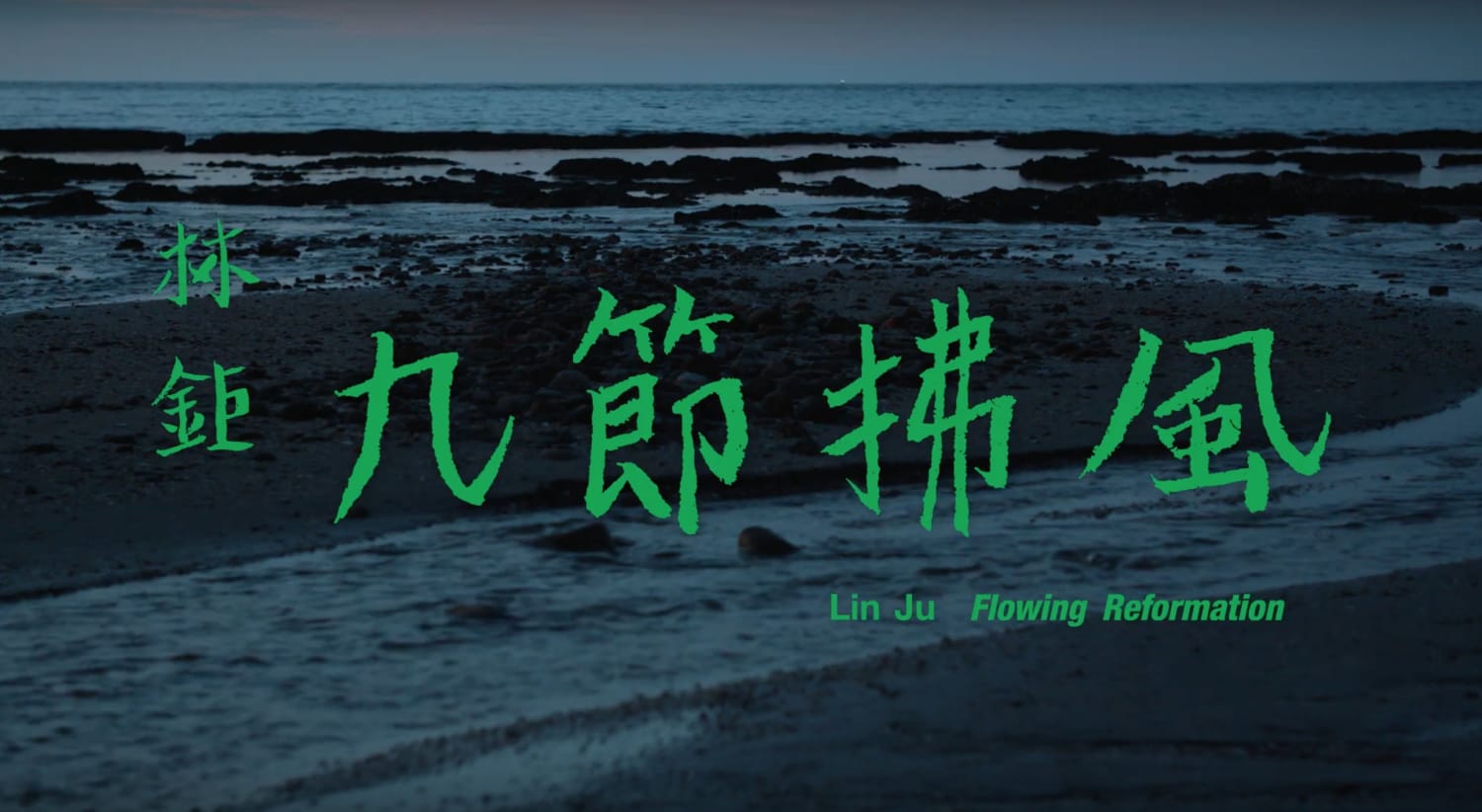Flowing Reformation: Lin Ju Solo Exhibition
Flowing Reformation: Lin Ju Solo Exhibition
- Press Release
- Installation Shots
- Publications
- Videos
-
Share
- X
- Tumblr
The Tina Keng Gallery is pleased to present Lin Ju’s latest solo exhibition Flowing Reformation, which opens on August 24, 2019. The exhibition title derives from a Buddhist breathing practice called “Nine Cycle Breathing Exercise,” which the artist has been practicing in recent years.
Known for his rigorous painting style, Lin Ju portrays mysterious and sometimes indecipherable notions and symbols from world religions and myths. As the notion of eye and sight is ubiquitous in his work, sighted flesh, one of his unique motifs, has returned to the series “Flowing Reformation.” A creature from ancient Chinese text The Classic of Mountains and Seas written in the 4th century B.C., sighted flesh represents self-generation and immortality. Lin Ju penned his version of the Tale of Sighted Flesh in 1995, where humans consume sighted flesh to seek immortality and quench sinful lusts, only to lose their minds in the end.
At a Sanyu retrospective at the Tina Keng Gallery in 2018, Lin Ju was captivated by the sensibility in Sanyu’s painting, and decided to start three series as a tribute to Sanyu, namely “Flowing Reformation, Act Sanyu,” “Sanyu’s Classic of Mountains and Seas,” and “Sanyu’s Zoo.” These series comprise notably of double-sided works, with painting on the front, drafts and drawings on the back. Intuitive and pensive, drafts and drawings on the back of the canvas serve as a space for reflection in his preparatory or post-painting stage, while the front and the back of the canvas together create interweaving thoughts and actions.
“Twice I’ve come into this world,” Lin Ju once said.“Chaotic the first time, estranged the second.” It is perhaps the feeling of estrangement that nudged him into painting, in an attempt to grasp the intangible unfamiliarity of being. In Lin Ju’s 2014 exhibition Mirrored Vignettes, his “Virility Revisited” series comprising rigorous still lifes of bones, candles, and mirrors, was inspired by artist Chen Ching-Yuan’s work, which urged Lin Ju to reflect upon the act of painting in which he has faithfully engaged for 30 years. The series embodies Lin Ju’s exploration of the origin of painting, where he paints as if he was sketching, a process that involves instinctive hand-eye coordination, he undergoes what he calls “the most corporeal experience” that links to the very existence of his own.
Evolving from his early solemn, strenuous paintings, such tension has eased down in his recent body of work, as the canvas turns into a more lively and inviting space to the viewer. Written on the back of the painting Flowing Reformation is a poem: “Sighted flesh falls out while I’m arranging the flower pot of Sanyu; hand grows from the pupil with eyes in the palm,” reminiscent of Nietzsche’s Thus Spoke Zarathustra (1883). The golden ball of Zarathustra symbolizes a world of one. The center of the world shifts when the golden ball is passed to another person. Lin Ju captures the golden ball of Sanyu, and passes his world on to the viewer.
Related artist
This website uses cookies
This site uses cookies to help make it more useful to you. Please contact us to find out more about our Cookie Policy.

























